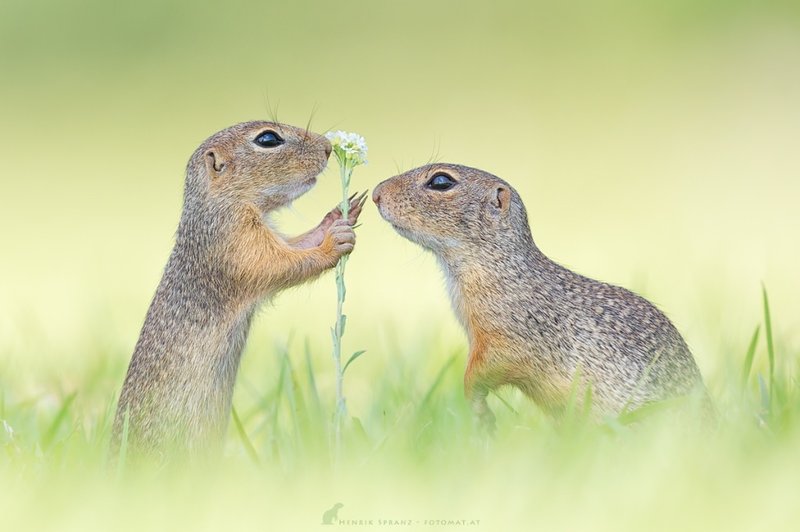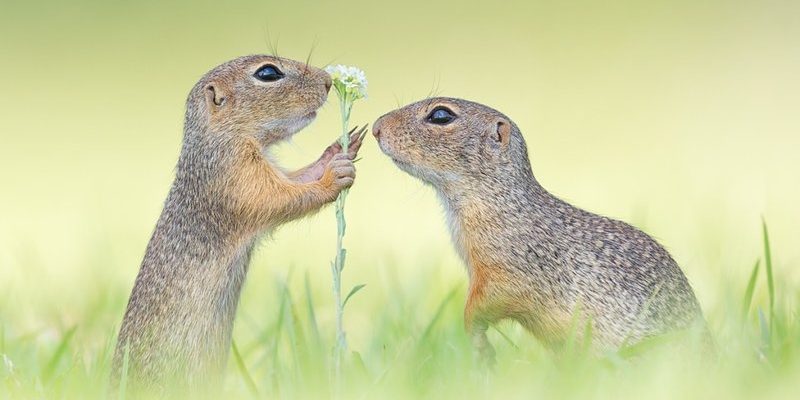
Let’s dive into the wild world of ground squirrels and explore the various tactics they use to endure extreme conditions. From their homes underground to their social behaviors, each of these adaptations plays a critical role in their survival. Think of it as a survival guide for the small but mighty!
The Art of Burrowing: Creating Safe Havens
One of the main ways ground squirrels survive in harsh environments is by creating elaborate burrows. These underground homes serve as shelters, protecting them from predators and extreme weather. Imagine living in a cozy little bunker that keeps you safe from the scorching sun or cold winds—this is exactly what squirrels do!
Their burrows can be quite complex, often featuring multiple entrances and chambers used for sleeping, storing food, and even raising young. These tunnels can go deep into the ground, which helps maintain a stable temperature and provides a refuge when danger approaches. Think of their burrows as mini-ecosystems that offer safety and comfort.
Ground squirrels are also known to dig new tunnels regularly, which helps them adapt to changing conditions. If one entrance becomes compromised, they have backup options. This flexibility in architecture is key to their survival. So next time you see a mound of dirt, remember that beneath that surface could be a busy squirrel neighborhood!
Adaptable Diet: Eating for Survival
Another remarkable trait of ground squirrels is their ability to adjust their diet based on the availability of food, which can vary greatly with the seasons. In spring and summer, they feast on juicy green plants, seeds, and fruits. However, as the colder months approach, their menu takes a dramatic turn.
During the fall, ground squirrels engage in a behavior known as *hyperphagia*, where they eat excessively to build up fat reserves for the winter. They don’t just eat for the sake of eating; they’re stockpiling energy to survive when food is scarce. This is like preparing for a snowstorm by filling your pantry!
When winter hits, and food becomes limited, they rely on their stored food supplies found in their burrows. They’ve stored seeds and nuts, which are packed with nutrients. The ability to shift from fresh food to stored supplies is a big part of how these squirrels resist harsh winters.
Social Structures: Teamwork in Tough Times
Ground squirrels often form colonies, and this social structure plays a vital role in their survival. They communicate through a variety of sounds and body language, helping each other stay alert to potential dangers. You might think of them as a supportive group of friends always looking out for one another.
When danger arises, such as a hungry hawk swooping down, one squirrel will emit a warning call that sends others scurrying to safety. This warning system is essential in the wild, considering how quickly threats can appear. It’s a bit like having an alarm system in place—but much more organic and collaborative.
Additionally, living in groups allows them to share warmth during colder months and increase their foraging efficiency. There’s strength in numbers, and that’s something these little guys know instinctively.
Weathering the Elements: Adaptations to Climate
Ground squirrels are masters at coping with climate extremes. In desert areas, they have adapted behaviors to avoid the heat of the day. Instead of being active during peak sunlight hours, they emerge early in the morning or later in the evening when temperatures are cooler. This is similar to how you might choose to exercise in the morning to avoid the afternoon heat!
In colder climates, they’ve developed thick fur and fat layers that provide insulation. During winter, some species enter a state of torpor, a form of hibernation that allows them to conserve energy while the world outside is frozen. This behavior is akin to hitting the snooze button on life until conditions improve.
Additionally, their burrow systems help insulate them from temperature extremes above ground. By burrowing deep, they take advantage of the earth’s natural ability to maintain a more stable temperature, allowing them to hibernate comfortably.
Predator Awareness: Staying One Step Ahead
Ground squirrels have developed keen senses and behaviors to outsmart their predators. With their sharp eyesight and hearing, they can detect threats from a distance. Whenever they spot something suspicious, they spring into action, sounding alarms and darting into their burrows.
Their strategy also includes being hyper-vigilant. They often stand upright for better visibility, scanning the horizon for any signs of danger. It’s like being a lookout in a ship’s crow’s nest—always on the watch for potential storms ahead.
Moreover, their coloration plays a role in survival. Many species have fur that blends into their surroundings, providing excellent camouflage. This natural disguise makes it harder for predators, like hawks or foxes, to spot them. It’s a fantastic example of nature’s creativity in helping wildlife adapt to their environments.
Climate Change: Facing New Challenges
While ground squirrels have evolved to survive in harsh environments, they’re not immune to the impacts of climate change. Changes in temperature and precipitation patterns can significantly affect their habitats and food sources. Increased droughts can reduce plant availability, making it harder for them to find food.
Additionally, as their natural habitats shift, ground squirrels may face new predators or competition from other species. It’s like moving to a new neighborhood where the rules are different, and you have to find your way all over again.
Conservation efforts are essential to help maintain their natural habitats and ensure these little survivors continue to thrive. Understanding how ground squirrels adapt can also inform broader discussions on wildlife resilience in the face of climate change.
Final Thoughts: The Resilience of Ground Squirrels
Ground squirrels are a testament to resilience in the animal kingdom. They’ve honed their survival strategies over many generations, showcasing adaptability, cleverness, and social cooperation. From their intricate burrows to their dietary flexibility and strong community ties, these little critters have it all figured out.
Next time you come across a ground squirrel, take a moment to appreciate the complexity and ingenuity of how they thrive in harsh environments. Their survival stories remind us of the sheer will of nature and the delicate balance that exists within ecosystems. It’s a fascinating world out there, one where even the tiniest creatures can teach us big lessons about resilience and adaptability!

